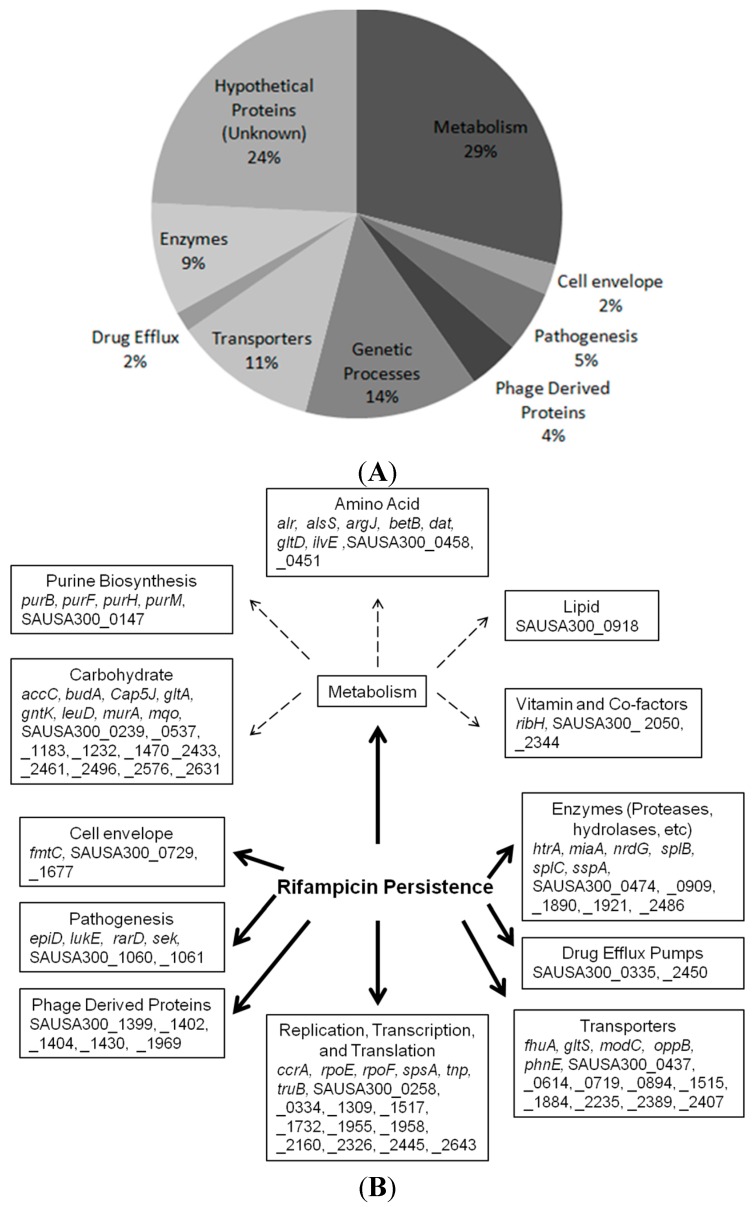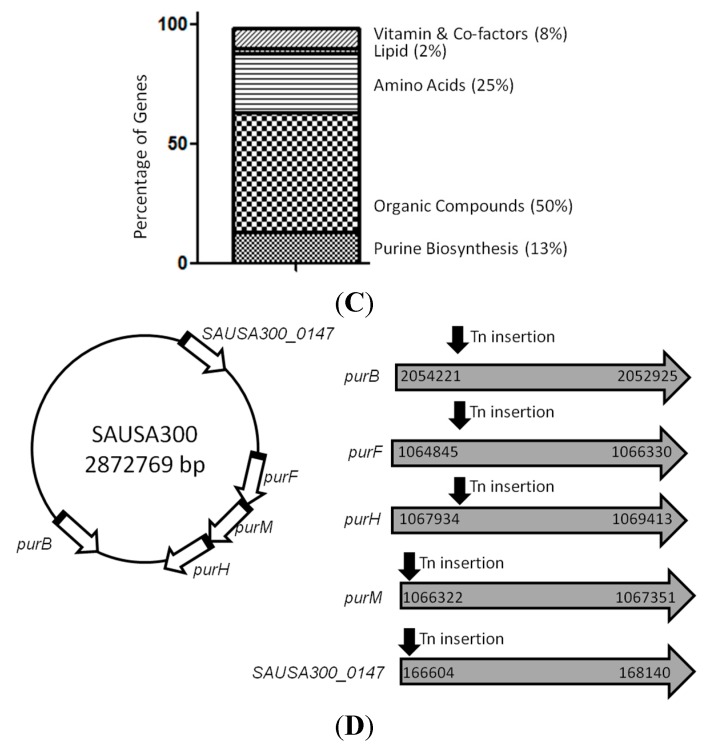Figure 2.
(A) Identification and characterization of the 124 genes involved in rifampicin persistence; (B) Pathways involved in rifampicin persistence; (C) Further breakdown of the metabolic pathways involved in persistence revealed a specific group of mutants belonging to purine biosynthesis; (D) The location of the transposon insertion in the genes involved in purine biosynthesis is depicted. All pathway analyses were performed using the Kyoto Encyclopedia of Genes and Genomes (KEGG) database, and the screen results were repeated and were reproducible.


